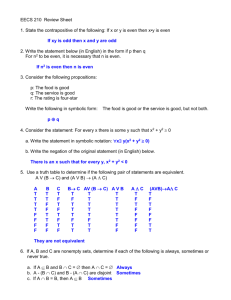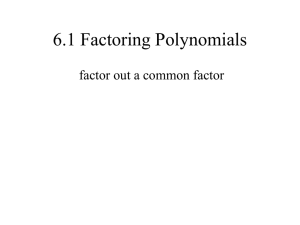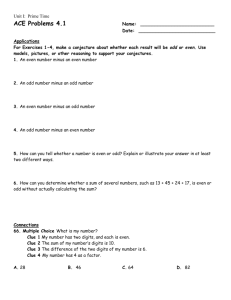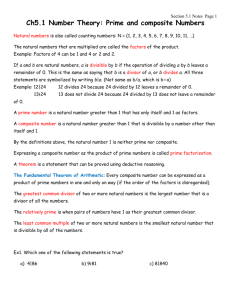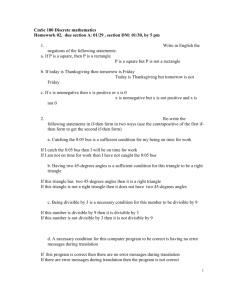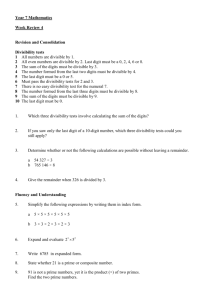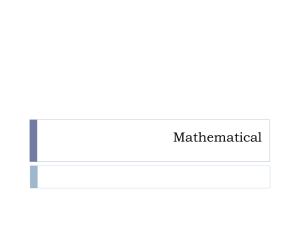5.3 Notes
advertisement
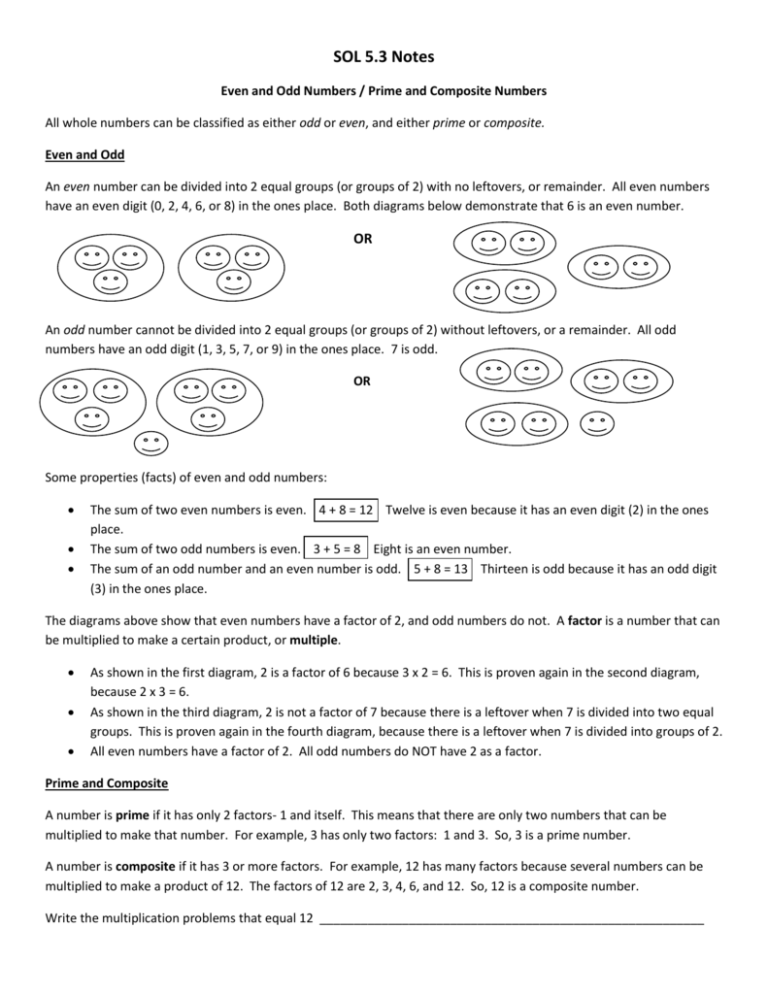
SOL 5.3 Notes Even and Odd Numbers / Prime and Composite Numbers All whole numbers can be classified as either odd or even, and either prime or composite. Even and Odd An even number can be divided into 2 equal groups (or groups of 2) with no leftovers, or remainder. All even numbers have an even digit (0, 2, 4, 6, or 8) in the ones place. Both diagrams below demonstrate that 6 is an even number. OR An odd number cannot be divided into 2 equal groups (or groups of 2) without leftovers, or a remainder. All odd numbers have an odd digit (1, 3, 5, 7, or 9) in the ones place. 7 is odd. OR Some properties (facts) of even and odd numbers: The sum of two even numbers is even. 4 + 8 = 12 Twelve is even because it has an even digit (2) in the ones place. The sum of two odd numbers is even. 3 + 5 = 8 Eight is an even number. The sum of an odd number and an even number is odd. 5 + 8 = 13 Thirteen is odd because it has an odd digit (3) in the ones place. The diagrams above show that even numbers have a factor of 2, and odd numbers do not. A factor is a number that can be multiplied to make a certain product, or multiple. As shown in the first diagram, 2 is a factor of 6 because 3 x 2 = 6. This is proven again in the second diagram, because 2 x 3 = 6. As shown in the third diagram, 2 is not a factor of 7 because there is a leftover when 7 is divided into two equal groups. This is proven again in the fourth diagram, because there is a leftover when 7 is divided into groups of 2. All even numbers have a factor of 2. All odd numbers do NOT have 2 as a factor. Prime and Composite A number is prime if it has only 2 factors- 1 and itself. This means that there are only two numbers that can be multiplied to make that number. For example, 3 has only two factors: 1 and 3. So, 3 is a prime number. A number is composite if it has 3 or more factors. For example, 12 has many factors because several numbers can be multiplied to make a product of 12. The factors of 12 are 2, 3, 4, 6, and 12. So, 12 is a composite number. Write the multiplication problems that equal 12 ________________________________________________________ Important things to remember about prime and composite numbers: The number 1 is neither prime NOR composite. It is the ONLY number that is neither one! It only has one factor: itself, so it does not qualify as prime or composite. The number 2 is the ONLY EVEN prime number. It only has two factors, one and itself. 2 x 1 = 2 ALL the rest of the even numbers are COMPOSITE. Since all even numbers have a factor of 2, even numbers have at least 3 factors. Divisibility Rules Divisible means that one number can be divided evenly by another with no remainder, or leftovers. If a number is divisible by another, then that number is a factor of the larger number. IF A NUMBER HAS A FACTOR OTHER THAN 1 AND ITSELF, IT MUST BE COMPOSITE! You can easily test if a number is a factor of another number by using the divisibility rules below. Remember: Every number has a factor of 1! Divisible by (has a factor of): 2 3 If: The number is even The sum of the digits is divisible by 3 4 The last 2 digits form a number that is divisible by 4 The number has a 0 or a 5 in the ones place The number is divisible by both 2 and 3 The number has a 0 in the ones place The number is divisible by both 3 and 4 5 6 10 12 Examples: 8, 70, 152: YES 93 (9 + 3 = 12) 12 is divisible (has a factor of) 3: YES 316 (last 2 digits form 16) 16 is divisible (has a factor of) 4: YES 25, 50, 70, 95, 240: YES 12, 18, 24, 30, 42, 84: YES 10, 20, 30, 90, 270: YES 24, 36, 48, 96: YES If there is not a divisibility rule to test if a certain number is a factor (example: 7), you must divide to find out if it divides with no remainder. If it does, it is a factor of the larger number! When a number is divisible by another number, it is also divisible by all the factors of that number. Example: if a is divisible by (has a factor of) 12, then it is also divisible by (shares the factors) 2, 3, 4, and 6.

